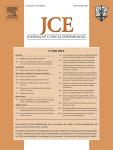- Joined
- Jan 10, 2010
- Messages
- 2,690
- Reaction score
- 3,662
Dropping this hear to poke the bear/stir up some discussion
RCT of adding docetaxel to RT+ADT for unfavorable intermediate risk disease. No difference in OS with adding docetaxel. But more concerning is the fact that they found a 4.6% incidence of radiation induced cancer (rectal or bladder) at 10 years of follow up. That I find highly concerning, I had quoted my patients likely a 1% risk.
Sample size isn't huge, so luck could play a role. Also uncontrolled, meaning no general population arm, which presumably would have a certain incidence of rectal or bladder cancer over 10 years (though not 4.6%). If true, or near true, however, that is very alarming. If prostatectomy had a 5% risk of rectal injury (a less severe outcome then a second malignancy) we would not be doing prostatectomies.
RCT of adding docetaxel to RT+ADT for unfavorable intermediate risk disease. No difference in OS with adding docetaxel. But more concerning is the fact that they found a 4.6% incidence of radiation induced cancer (rectal or bladder) at 10 years of follow up. That I find highly concerning, I had quoted my patients likely a 1% risk.
Sample size isn't huge, so luck could play a role. Also uncontrolled, meaning no general population arm, which presumably would have a certain incidence of rectal or bladder cancer over 10 years (though not 4.6%). If true, or near true, however, that is very alarming. If prostatectomy had a 5% risk of rectal injury (a less severe outcome then a second malignancy) we would not be doing prostatectomies.




